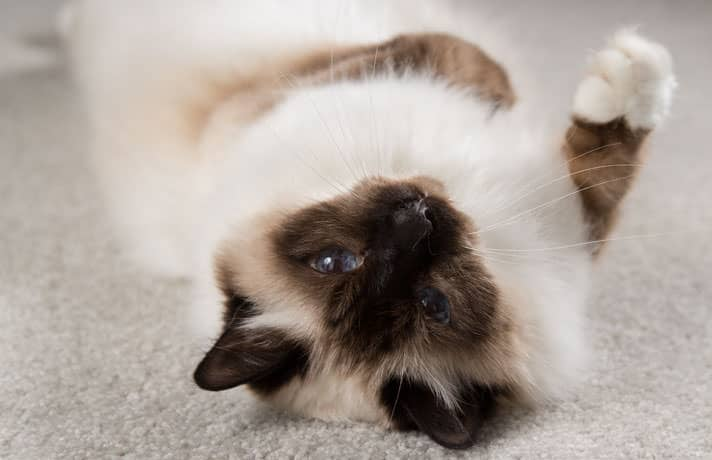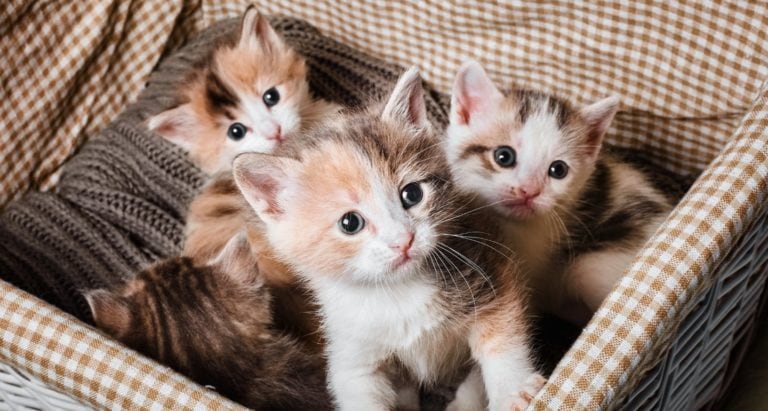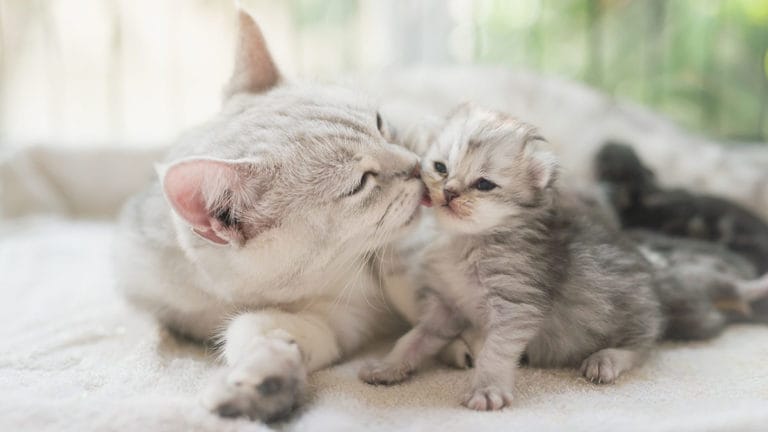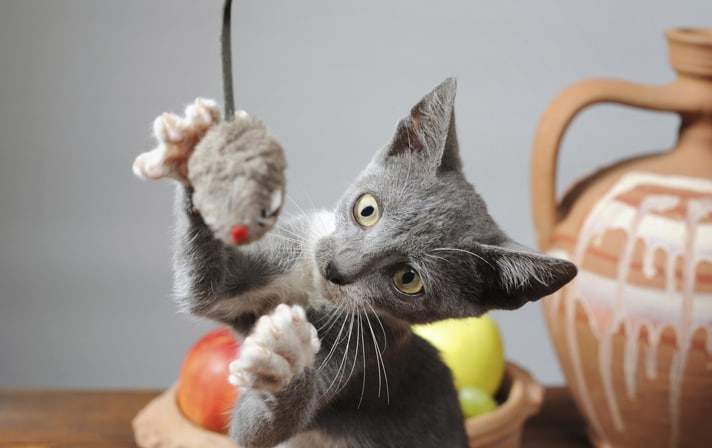The phone calls often go like this: “We need to bring our kitten in right away. We are afraid she might be rabid!” Rabies is certainly not something to rule out lightly as it is a very serious disease. However, when further questioning shows that the cat involved is a 6-month-old female kitten who has not been spayed, I can be quite sure she is simply “in heat.” But I understand the confusion. The behavior changes of a cat in heat are enough to concern any family.
When To Expect Going Into Heat
Most female cats are at close to 80 percent of their adult size when they have their first estrus or “heat.” For shorthaired cats, that is generally around 6 months of age. Some kittens go into heat as early as 4 months, while longhaired cats may not have a first heat until about 18 months, though that is less common. Siamese cats are notorious for coming into heat at an early age.
The estrus cycle in a cat is stimulated by daylight length — with 12 hours of daylight generally being the activator. Cats are classified as “seasonally polyestrus.” This means that a cat will have multiple heat cycles during the breeding season. For cats in the Northern Hemisphere, March to October is generally considered to be prime breeding season. Figure your cat will cycle through every 14 to 21 days from March to September or October, unless she is bred or spayed.
Breaking Down The Heat Cycle
There are four stages to the feline heat cycle.
1. Proestrus: The first stage is proestrus. This is a short period of one to two days during which your cat may be restless or more affectionate. She may have changes to her “meow.”
2. Estrus: Next comes estrus or the real “heat” period. This is when your kitten could become pregnant. Ideally, cats should not be bred until they are at least a year of age to allow for full growth, but a pregnancy could occur this early on.
For the four to six days of full estrus or being in heat, your kitten will show some unusual behaviors, and some of these cause many families to panic. The meows become louder, more frequent to the point of being nonstop and very insistent. Think loud meows all day and night. While your kitten may suddenly become very affectionate, she may also grab at you with her claws out or bite if picked up. She will roll over while crying and may posture with her rear end raised while treading with her hind paws. Cats do not show the bloody discharge associated with dogs in heat, so the behavior changes may be the first tip off that your kitten has hit puberty.
3. Interestrus: Most cats then move on to interestrus. A few will have a prolonged estrus. If your kitten has not been bred, she will stay in this interestrus stage for seven to 14 days then revert back to proestrus. During interestrus, the bizarre behaviors will fade out.
Cats are induced ovulators. This means your cat will not spontaneously ovulate. The stimulus of being bred causes the ovulation. Breeding or even an attempted breeding that failed to cause pregnancy will send your kitten out of heat. If she is not pregnant, this false pregnancy will last about five weeks and then she will head back into heat. If she is pregnant, she will deliver kittens in about 63 days.
4. Anestrus: Your cat’s reproductive system goes into rest during the anestrus period. This is from about November through January when the daylight hours become shorter. During this time, your cat’s reproductive system becomes quiescent and her personality returns to the cat you love.
What Causes The Heat Cycle?
The hormone sequence for the whole estrus cycle starts off when the hypothalamus (part of the brain) signals the pituitary gland to releasefollicle stimulating hormone or FSH. The FSH travels to the ovaries and starts up follicle production. The follicles then produce estrogen, which triggers the “in heat” behaviors. When a cat is bred, the pituitary gland then sends out luteinizing hormone or LH, which causes the ovary to release the eggs from their follicles. This is ovulation. Each egg can potentially develop into a kitten once the sperm of a male cat fertilizes it.
The average number of eggs released is four, but cats have had as many as 18 kittens in one litter!
The egg empty follicles develop into corpus luteum cysts. Now they switch over to produce the hormone progesterone. Progesterone is the hormone that is essential to maintain the pregnancy. This is a rather complex set of hormonal stimuli and responses. Any misread signals along the way would lead to infertility.
Living With A Cat In Heat
Most families choose to spay their adolescent cat after going through just one heat. The nonstop noise and behavior changes can be overwhelming. If you choose to leave your female kitten intact, your veterinarian may be able to show you how to stimulate her vagina to cause ovulation. That will cut down on the number of heat cycles in each breeding season, but it won’t stop all of them. Cats who are left intact but not bred may have a higher risk of developing a pyometra or infected uterus. The risk of developing breast cancer is also increased.
The good news is that your kitten’s bizarre behavior is much more likely her coming into heat than having rabies!
Read More
Share:











